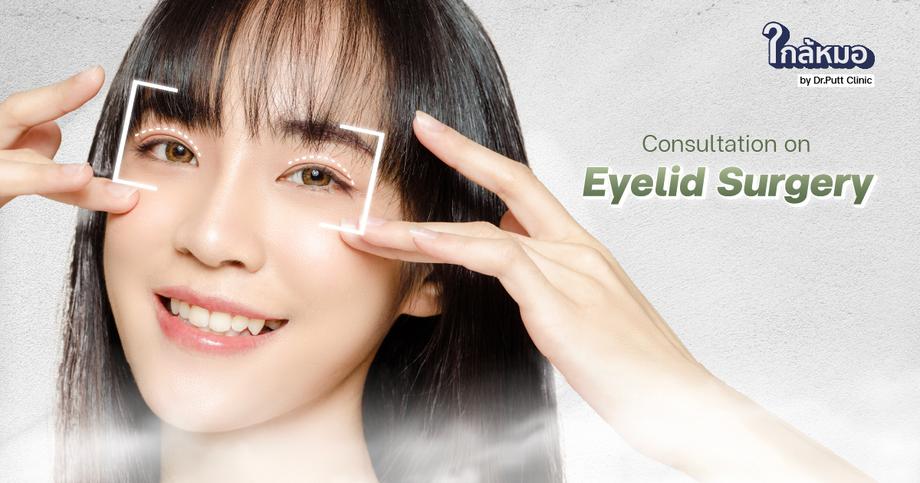Surgery Consultation
Eye Surgery Consultation
There are various techniques for double eyelid surgery, each tailored to a surgeon's expertise and a patient's individual eye shape.
"Eyelid Surgery " There are various techniques for double Eyelid Surgery , each tailored to a surgeon's expertise and a patient's individual eye shape. Common methods include long incision, short incision, and multi-point suturing. Each technique addresses specific issues like single eyelids, indistinct eyelid creases, hooded eyes, asymmetrical eyelids, or ptosis (droopy eyelids). Choosing the right approach is crucial for successful Eyelid Surgery outcomes. Eyelid Surgery involves detailed pre-operative planning
Double Eyelid Surgery (Blepharoplasty)
Double Eyelid Surgery remains a continuously popular procedure because a defined, rounded eye crease can make the face appear more youthful, charming. This type of Eyelid Surgery is always in high demand, addressing a wide range of common concerns. These include single eyelids, hooded eyes, uneven eyelids, a complete lack of an eyelid crease, ptosis, or even for those with existing double eyelids who desire a sharper, more defined look. The preparation phase is also key to a smooth Eyelid Surgery experience.
A beautiful double eyelid should not have excess skin or skin that droops over the crease or the eye itself. Double Eyelid Surgery involves making an incision on the upper eyelid to remove excess skin and fat, followed by suturing to create a natural and beautiful crease. In addition to this standard approach, other advanced techniques have been developed to enhance the clarity of the eyelid crease. The main methods for double Eyelid Surgery include: Eyelid Surgery requires precision and artistry.
Long Incision Technique with Excess Skin Removal
This technique is ideal for individuals with single eyelids, small eyes, or hooded eyes resulting from sagging skin and excess fat. It is also suitable for those with drooping outer corners of the eyes or individuals who need revision Eyelid Surgery. The long incision method allows for the removal of excess skin and fat, making it effective for both younger patients and older individuals with drooping eyelids or ptosis. Post-operative care is vital for recovery after this type of Eyelid Surgery.
Short Incision Technique
The short incision, or minimal incision, technique is best for people with single eyelids, small eyes, or hooded eyes who have thin eyelid skin with minimal fat. This Eyelid Surgery method, which does not involve removing excess skin, provides excellent results for suitable candidates.
3-Point Suture Technique
The 3-point suture technique creates a double eyelid without a full incision. Instead, it involves making three small punctures along the eyelid crease and using sutures to form the fold. This is a good Eyelid Surgery option for those with single eyelids and minimal excess skin or fat. When the eyes are closed, the scars are virtually invisible. However, there is a risk of the crease loosening over time or the sutures being noticeable.
Eyelid Surgery with Lateral Canthoplasty
(Winged Eyelid Surgery)
Also known as Canthoplasty, this is a Eyelid Surgery permanent technique used to lift the outer corners of the eyes, giving them a sharp, upturned look similar to a swan's eye. The surgeon makes a small incision at the outer corner to adjust and secure the lateral canthal tendon, lifting it to the desired angle.This creates longer sharper eye shape.
This method is highly precise and suitable for those who want a significant change to their eyelid shape and outer corners or are dealing with sagging eyelids. The key advantage is a clear and permanent result, but it requires a longer recovery period with potential swelling and bruising. For this reason, it is crucial to choose an experienced surgeon to ensure symmetrical results.
Lower Eyelid Surgery (Lower Blepharoplasty)
Eyelid Surgery Lower Blepharoplasty is a surgical solution for problematic lower eyelids. As a person ages, the lower eyelid fat can gradually protrude, creating under-eye bags. The best way to reduce these fat pads is to surgically remove the excess fat and tighten the sagging skin and muscle, which results in a more youthful appearance.



